Nursing prepares for a variety of medical emergencies

Nurses at Cleveland Clinic are well-prepared for emergency management response, such as for mass casualty accidents. But in today’s world, it’s not enough for caregivers and facilities to be ready when patients are wheeled or walk through the door. Cleveland Clinic has taken steps to bring well-equipped emergency teams to patients, whether in their homes or at large events. And the healthcare system has upgraded facilities to accommodate potential chemical exposures and environmental viral infections.
Cleveland Clinic is a non-profit academic medical center. Advertising on our site helps support our mission. We do not endorse non-Cleveland Clinic products or services. Policy
In July 2014, Cleveland Clinic’s Cerebrovascular Center launched one of the country’s first mobile stroke treatment units (MSTU). The MSTU resembles an ambulance on the outside, but is equipped and staffed inside like a virtual emergency room dedicated to stroke diagnosis and management. The MSTU brings potentially lifesaving tissue plasminogen activator (tPA) to ischemic stroke patients, rather than waiting for them to enter the emergency department (ED).
“The benefits are extraordinary,” says Scott Swickard, MSN, ACNP, Clinical Operations Manager for Critical Care Transport at Cleveland Clinic. “By bringing this unit to patients at the time they are having the stroke, we take an emergency department directly to their driveway. We are able to provide treatment so much faster than I ever thought possible.” Stroke centers strive to deliver tPA in the ED within an optimal 4.5-hour window after symptom onset. The average time from patient entry into the MSTU to tPA administration is just 19 minutes.
“The difference the MSTU makes is related to outcomes,” says Swickard. “Quicker treatment may equal fewer disabilities and a greater chance of going home after a stroke event, rather than requiring rehabilitation care for neurological deficits. Our goal is to achieve best outcomes that lead to high quality of life after discharge.”
The MSTU is based at Cleveland Clinic’s main campus and dispatched (along with a standard ambulance) via the city of Cleveland’s 911 system for suspected stroke. When strokes are diagnosed in the unit, the MSTU transports patients to a stroke center with appropriate resources to care for the severity of stroke symptoms. Every effort is made to keep patients within their normal care networks and close to home. Between July and November 2014, the MSTU was dispatched 421 times and transported 125 patients.
The MSTU houses a portable computerized tomography (CT) scanner and a small telemedicine unit that enables rapid transfer of brain scans and videoconferencing with a neuroradiologist and a stroke specialist at the hospital. An onboard mobile lab allows testing of blood samples and immediate tPA administration, if needed. The MSTU is staffed by a paramedic, critical care nurse, CT technologist and emergency medical technician, all specifically trained in acute stroke care delivery. The nurse assesses patients, ensures physiological stability, teleconferences with physicians and administers medication.
Approximately 25 critical care nurses work on the MSTU team. One of them, Joe Kale, RN, was part of a team that set a record 11-minute door-to-drug delivery time in September 2014. “When time is lost, brain is lost,” says Kale. “The patient went home from the hospital with minimal to no deficits.”
Kale admits he was initially skeptical about the efficacy of the MSTU, but now that he’s gone on many calls —transporting 15 patients and administering tPA five times —he’s an ardent advocate. “We are there with all the necessary resources to provide care to patients,” says Kale. “There is no waiting in triage, no waiting for a bed to be cleaned or a CT scanner to become available. There is nothing to distract us from focusing all our efforts on individualized care of each patient.”
In 2013, Cleveland Clinic debuted a state-of-the-art unit capable of handling patients with chemical contamination or environmental viral infections, such as Ebola. “Like any emergency situation, you have to be prepared for disease outbreaks,” says Shannon Pengel, MSN, RN, NE-BC, Clinical Nursing Director of Cleveland Clinic’s Sydell and Arnold Miller Family Heart & Vascular Institute and Critical Care. “It’s critically important to understand how to care for these patients as well as keep our caregivers safe.”
The contained unit features everything healthcare providers need to manage patients, including a built-in lab so blood samples do not have to leave the area for testing and three beds, two of which are ready for intensive care-level care. Each patient care room has two adjoining rooms — one where caregivers put on personal protective equipment and another where they take it off. To minimize the risk of spreading infection, the unit has a separate, secured entrance and adjoins the hospital’s intake area and emergency department. “As patients are triaged, they can literally walk right into the unit,” says Pengel.
A multidisciplinary team helped design the unit. “It was an amazing effort by countless caregivers throughout the organization, from Infectious Disease to Facilities, Environmental Services and Employee Health and Safety,” says Pengel.
Six care teams of 15 healthcare practitioners are trained to work on the unit. Teams include nurses, respiratory therapists, critical care physicians, internal medicine physicians and pediatric providers. Each team has six nurses — two each from medical-surgical units, the intensive care unit and the emergency department. In addition, other caregivers are available to respond if necessary, including a surgical team, nephrologists and dialysis nurses. When a patient arrives on the unit, teams are activated and rotate care, three days on and three days off.
Care teams received hands-on and simulation training. A large part of the hands-on training was devoted to getting personal protective equipment on and off properly. “As nurses, we use protective equipment all the time for isolation precautions, such as C. diff,” says Pengel. “But Ebola is very different.” One of the training techniques involved putting chocolate syrup on care team members’ gloves and gowns, then time was spent taking off the equipment without allowing syrup to touch skin. Early on, nearly everyone “contaminated” themselves. The chocolate syrup exercise “helped us change our processes,” says Pengel. “Now, instead of having employees take off their own equipment, someone else does it for them.”
After hands-on training on the unit, teams participated in 16 hours of simulation training. It began with instruction on Ebola — what it is and how it spreads. Then teams put on protective equipment and went through various scenarios. For instance, they practiced cleaning up vomit and drawing blood. Today, caregivers take part in ongoing simulation training twice a year.
Cleveland Clinic’s Emergency Preparedness Team works hand in hand with the Center for Health Affairs and local and state departments of health to help ensure the safety and health of participants and spectators at large community events. For both the 2013 National Senior Games and the 2014 Gay Games that were held in Cleveland, Cleveland Clinic had medical teams on-site at major venues to provide first aid and run triage.
“You have to be proactive at these events,” says James Bryant, MSN, RN, CEN, Associate Chief Nursing Officer for Emergency Services at Cleveland Clinic. “It’s not as simple as taking care of patients. These are high-profile media events, so we have to be prepared for anything.” Most people treated at the Senior Games had “bumps and bruises” associated with sporting events, says Bryant.
Nearly 11,000 senior athletes competed in 19 sports at the Senior Games. Caregiver teams of nurses, paramedics and physicians set up tents outside the primary stadiums. They treated athletes’ ailments such as twisted ankles and dehydration. Only 16 people were sent to the hospital.
Cleveland Clinic is also vigilant about recognizing illnesses that could occur en masse at large events, such as food poisoning. When the Senior Games were in progress, the healthcare system placed a plaque in each emergency department asking visitors to let them know if they were a spectator or athlete at the Senior Games. If so, nurses and physicians placed a note in electronic medical records and in a database managed by the Ohio Department of Health. The database flags common words, such as fever, headache and vomiting, and sends hospitals a daily report. “In the course of a day, two people with those symptoms won’t raise your suspicion,” says Bryant. “But in aggregate, if several patients have a similar condition and also a commonality such as attending the Senior Games, it spikes your interest.”
Cleveland Clinic has already begun emergency readiness planning for the 2016 Republican National Convention, which will be held in Cleveland. “When high-level leaders are involved, another dimension of planning takes place,” says Bryant. The hospital will team with the Secret Service and others to ensure the safety and health of all attendees.
Emergencies take on many forms, from acute events to disease outbreaks to food poisoning at convention centers to mass casualties in an accident. Being prepared requires foresight and planning. “We really hope nothing happens at these large events and that we never see an Ebola outbreak,” says Bryant. “But we’ve come together as a team to be prepared just in case.”
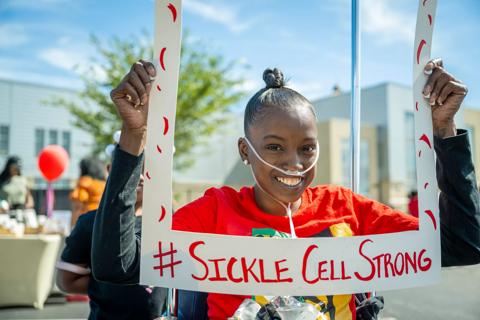
Nurses play key role in comprehensive lifetime treatment program
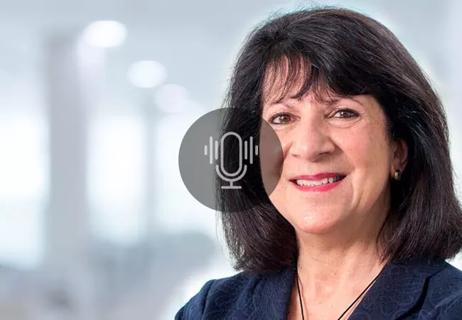
Compassionate care requires nurses to see beyond medical conditions to understand the complete patient
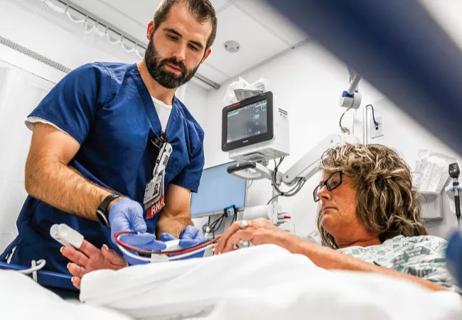
Akron General and Union Hospital increase throughput and patient satisfaction by rethinking their approach to care
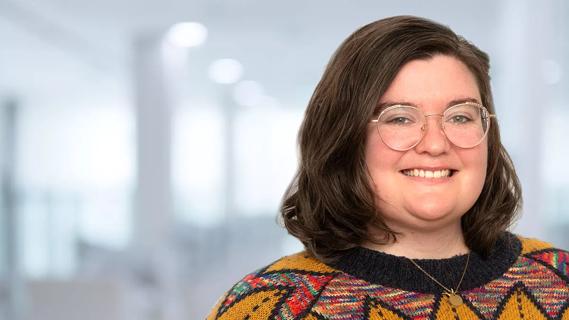
Adding humor to your communication toolbox can help put patients at ease and create connections with colleagues

Aromatherapy initiative promotes a healing environment
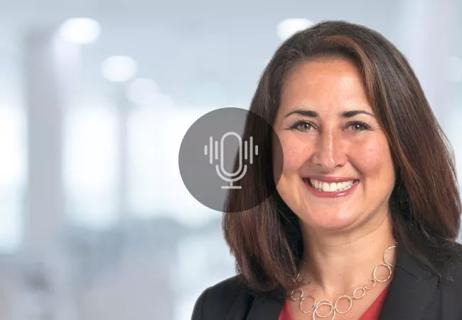
Insight on caring for patients who lack adequate insurance, a social support system or financial stability
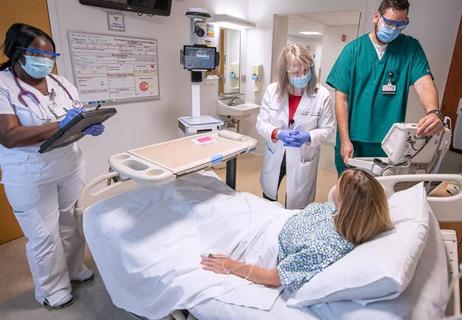
How clear, concise language can bridge the gap between providers and patients

Specially appointed room serves as safe space for families